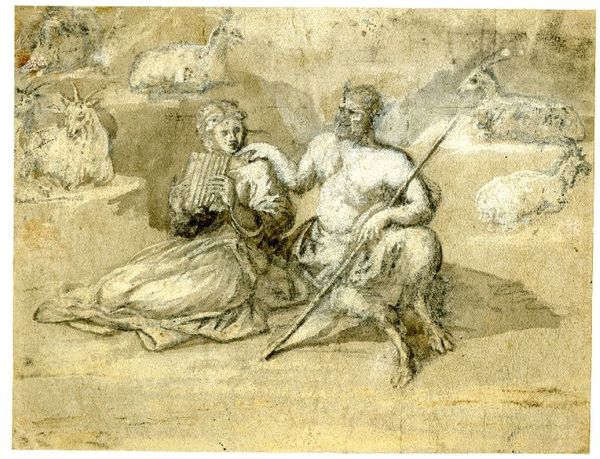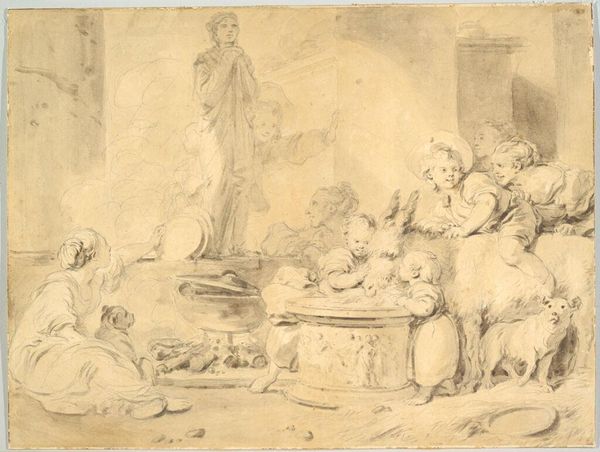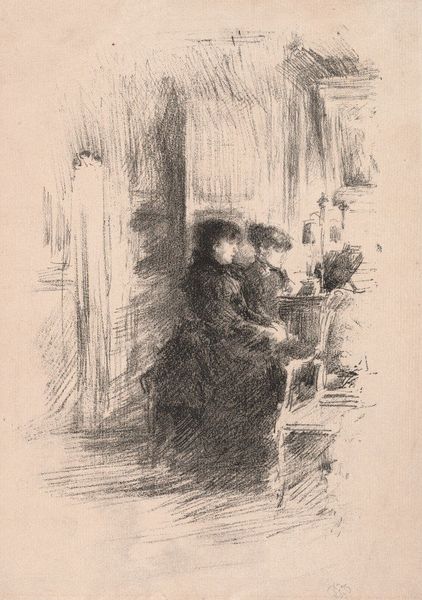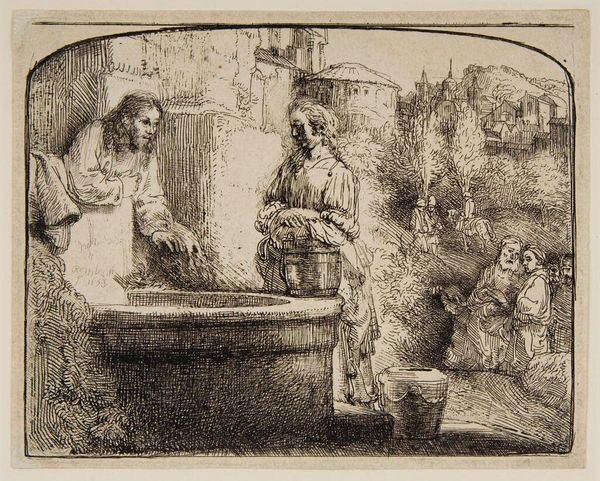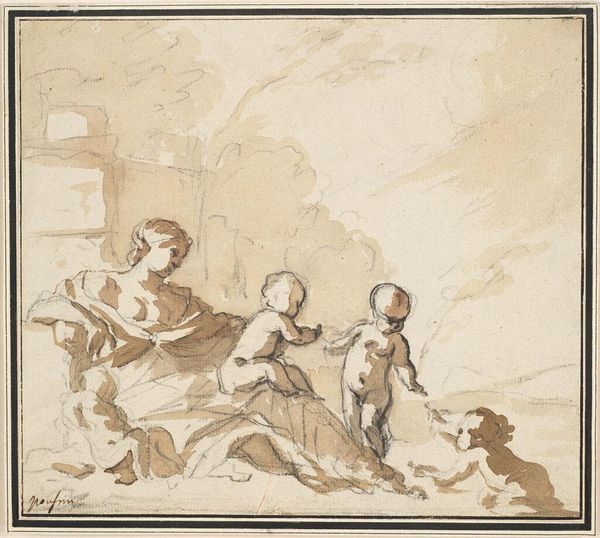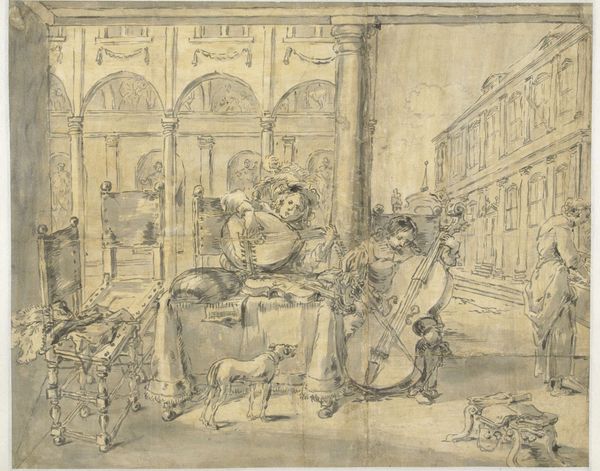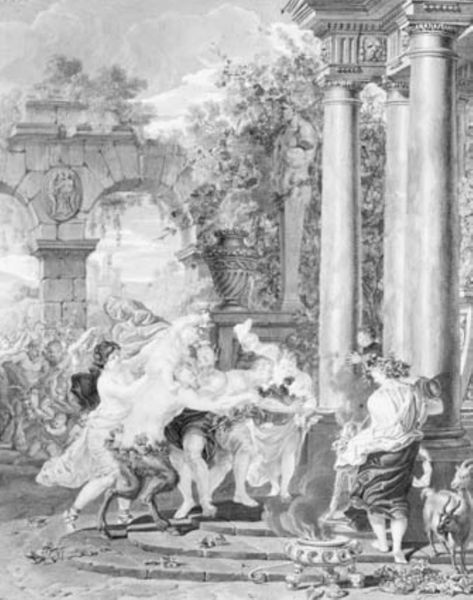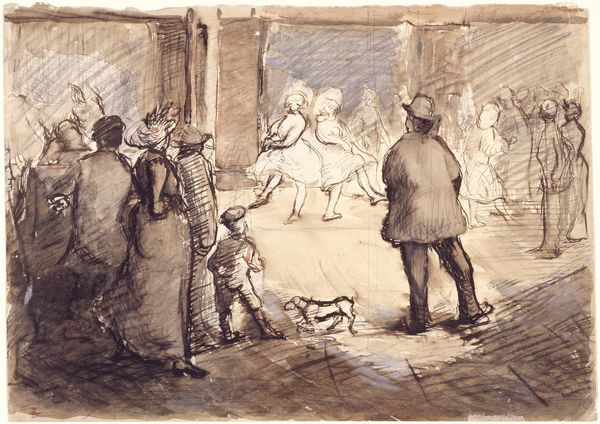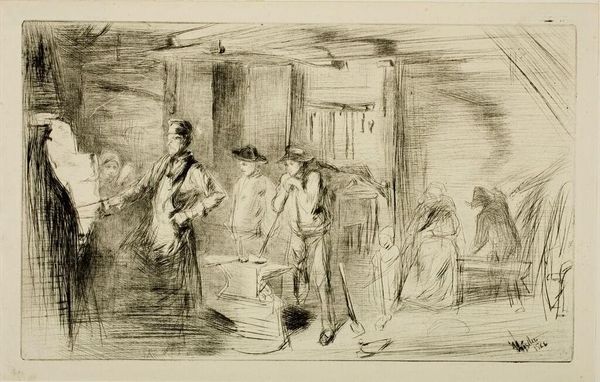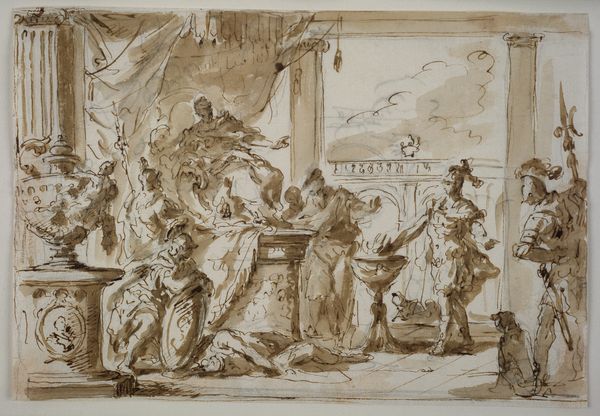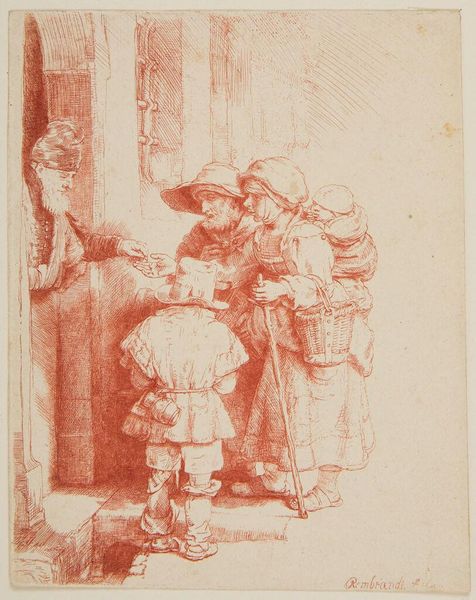
painting, oil-paint, impasto
#
portrait
#
painting
#
impressionism
#
impressionist painting style
#
oil-paint
#
landscape
#
figuration
#
oil painting
#
impasto
#
genre-painting
Copyright: Public domain
Curator: Edgar Degas' "Children on a Doorstep," created in 1872. Immediately, the doorway, so sharply angled, divides and defines the painting's reality, a stage set. It’s mostly ochre and browns... not his usual ballet dancers. Editor: There's a stark contrast that throws me off—one side, childhood rendered in gentle light; the other, a servant, lost in shadow. The dog casually striding the courtyard… Degas sets such distinct scenes. Curator: Right, think about what's depicted; not some idealized scene of childhood bliss, but rather the realities of labor, class. The maid's dress, coarse, compared with those of the children in white—each textural choice reinforcing social boundaries. Editor: That impasto, it's thicker on her form as well. Like the material burdens she carries visually weight the image itself. All that ochre… it seems to isolate the warmth that surrounds the playing children outside, yet not a true joyous feeling emerges for me. Curator: Interesting. Degas used new pigments, industrially produced. It enabled artists to move from studios to the street but also homogenized colors...reflect on how a painter's "freedom" rests upon those economic realities. Editor: Well, it almost feels dreamlike now, the figures blurring like the half-recalled echoes of childhood experience—yet tempered always by the social barriers holding everything back... the child as a reflection, perhaps a sadder, harsher kind. Curator: Exactly! By exploring the making, the materials and what all that evokes, one might begin to re-imagine what even "home" or “play” might’ve signaled. Editor: Perhaps he means to remind us to challenge our understanding of reality.
Comments
No comments
Be the first to comment and join the conversation on the ultimate creative platform.


